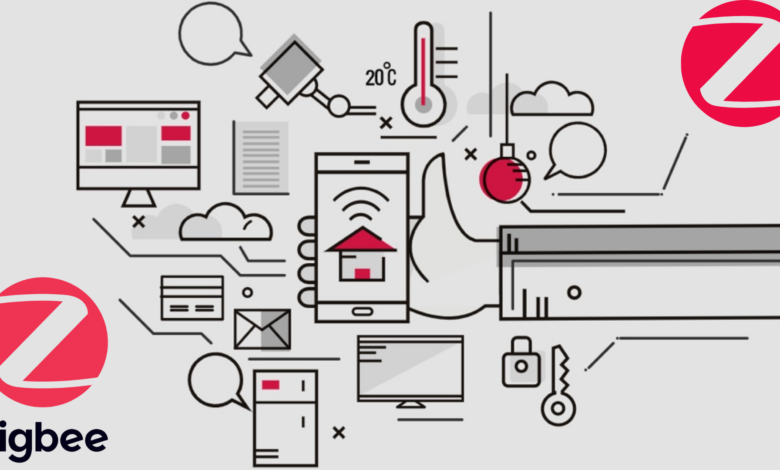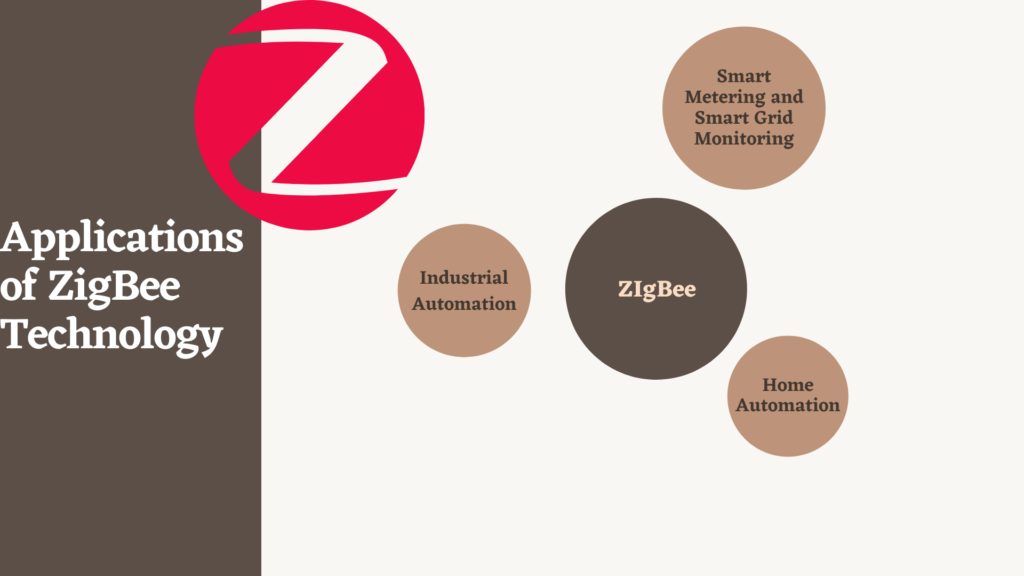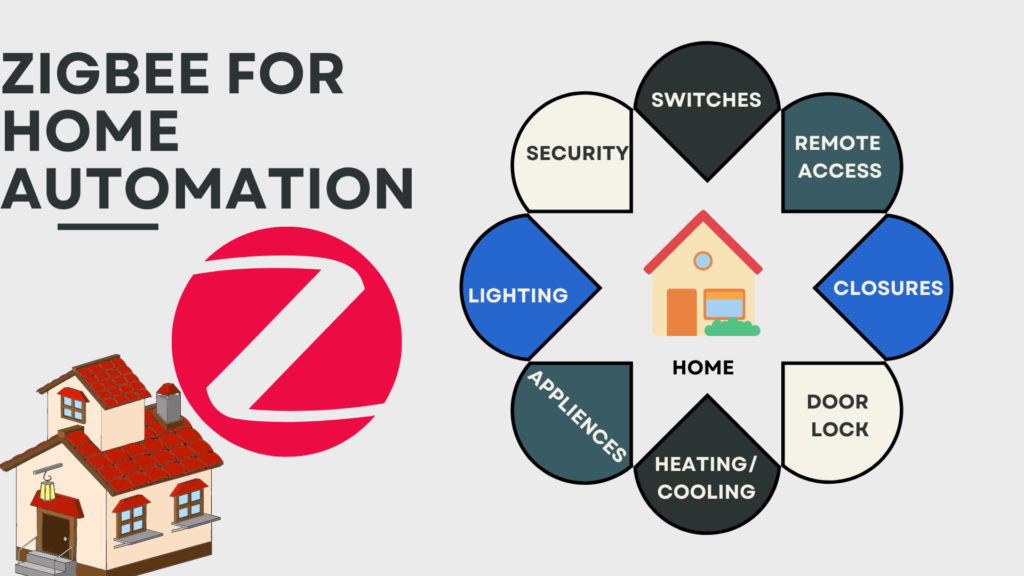What is ZigBee? How Does ZigBee Works?

- What Is ZigBee?
- Advantages of ZigBee
- ZigBee for Home Automation
- Applications of ZigBee Technology
What Is ZigBee?
ZigBee is a low-cost, low-power wireless IoT network technology developed as an open worldwide standard. The IEEE 802.15.4 physical radio specification underpins the ZigBee standard, which runs in unlicensed spectrum such as 2.4 GHz, 900 MHz, and 868 MHz.
In 2003, the Institute of Electrical and Electronics Engineers (IEEE) ratified the 802.15.4 specification, which ZigBee stack is based on.
The protocol is a packet-based radio protocol aimed at low-cost, battery-powered devices. The protocol allows devices to connect in a wide range of network topologies and has a long battery life.
ZigBee 3.0 Protocol
Member firms of the ZigBee Alliance devised and ratified the ZigBee protocol. The ZigBee Alliance is made up of over 300 top semiconductor manufacturers, technology enterprises, OEMs, and service providers.
The ZigBee protocol was created to provide a simple wireless data solution with safe and dependable wireless network designs.
ZigBee protocol features include:
- Multiple network topologies are supported, including point-to-point, point-to-multipoint, and mesh networks.
- Low duty cycle extends the battery life.
- Latency is low.
- Spread Spectrum in Direct Sequence (DSSS)
- Each network can have up to 65,000 nodes.
- Secure data connections with 128-bit AES encryption
- Avoiding collisions, retries, and acknowledgments
Mesh Networks
The ability to support mesh networking is an important feature of the ZigBee protocol. Nodes in a mesh network are connected to one another in such a way that each node has several paths connecting it.
Through a complex, built-in mesh routing table, connections between nodes are dynamically updated and optimized. Mesh networks are decentralized in nature, with each node in the network capable of self-discovery.
The mesh architecture also allows nodes to modify routing patterns based on the new network structure when they depart the network. Mesh architecture and ad-hoc routing characteristics give increased stability in changing situations or single node failure.
Applications of ZigBee Technology
The ZigBee protocol serves to a wide range of applications, including industrial automation, home automation, smart metering, and smart grids, thanks to its three primary USPs of low cost, low power consumption, and faster wireless connection.
It also provides seamless operation of numerous sensor instruments while providing years of battery life due to its low power consumption. Here are a few examples of where ZigBee is commonly used.

Industrial Automation
ZigBee provides a faster and lower-cost communication system that can communicate with practically all factory equipment and centralize them in one location, allowing you to monitor and optimize the control process.
ZigBee protocol is also utilized in a variety of medical and scientific devices, including personal chronic monitoring, sports and fitness trackers, and remote patient monitoring.
What Is Bluetooth? How Does Bluetooth Works?
Smart Metering and Smart Grid Monitoring
ZigBee is used in smart metering for better energy consumption response, security against power theft, and pricing assistance, among other things. In smart grids, ZigBee is also utilized for reactive power management, fault location, remote temperature monitoring, and other functions.
Home Automation
In most home automation equipment, ZigBee is one of the most extensively utilized protocols. ZigBee is present everywhere, from lighting system solutions to sensor responsive systems to security and surveillance solutions.
ZigBee for Home Automation
The ZigBee protocol is commonly used for home automation solutions, and it may provide comprehensive lighting, security, comfort, and energy management solutions. Several well-known global home automation firms use ZigBee to power their gadgets.
Because ZigBee is cross-compatible and interoperable, it is simple to manage multi-vendor devices. If a product complies with ZigBee Home Automation (HA 2.1), you can rest confident that it will operate with your automation system, regardless of the manufacturer.
The ZigBee mesh-routing network, in which one device can talk to several devices and data packets go on no fixed paths, provides greater flexibility and speed in device communication.

The following are some of the features of ZigBee for Home Automation:
- Setup and maintenance are simplified.
- It’s perfect for new construction and remodeling.
- ZigBee allows you to connect to devices all across the world using your smartphone.
- Monitors power use and allows you to turn on/off devices from afar.
- Interference avoidance techniques and built-in security guarantee better/enhanced security and worry-free operations.
- Assist you in creating bespoke lighting sceneries depending on your daily schedules, events, and activities.
- Your security sensors can last up to 7 years because to the ZigBee protocol’s low power consumption.
Advantages of ZigBee
- Dangling wires are no longer an issue thanks to wireless technologies.
- Because of the vast number of participants and competition, one common technique spread over several products helps minimize product costs.
- This also allows clients to choose from a wide range of products.
- Installation and maintenance are simple, resulting in cost-effective solutions.
- Higher device interoperability and cross compatibility.
- AES 128 encryption and device authentication provide safe data exchanges.
- Connection to the internet for more control and access.
- If any odd events are detected, you will receive immediate notifications.
- Lighting, security, appliances, and house access are all covered.
- Better data transfer dispersion reduces stress at a single location.
- Short time delay, typically 15 milliseconds from standby to activation, 15 milliseconds from active device channel access, and 30 milliseconds from active device channel access
Conclusion
With low-cost, low-power solutions, ZigBee enables widespread deployment of wireless networks. It can run for years on cheap batteries, making it ideal for a variety of monitoring and control applications. Lighting controls, building automation systems, tank monitoring, HVAC management, medical devices, and fleet applications are just a few of the many areas where ZigBee technology is making considerable progress.
Frequently Asked Questions (FAQs)
Is ZigBee superior to WiFi?
With only 250kbps data transfer speeds, the ZigBee protocol is substantially slower than WiFi. Zigbee devices can utilize very little energy due to their slower transfer speed.
Where does ZigBee come into play?
ZigBee is commonly employed in low-data-rate applications requiring long battery life and secure networking. (ZigBee networks are protected by symmetric encryption keys of 128 bits.) ZigBee’s specified rate is 250 kbit/s, making it ideal for intermittent data transmissions from sensors or input devices.
Is ZigBee the same as Bluetooth?
Because ZigBee is a local area network (LAN), it is not intended to connect to devices in the immediate vicinity of the user, unlike Bluetooth LE. It instead connects to devices that require more range. As a result, it’s an excellent choice for home automation and smart lighting.
Is it possible to utilize ZigBee without the Internet?
The most frequent programs in most smart home devices are ZigBee and Z-Wave. Most of your smart plugs, switches, and lighting fixtures will need to be replaced because they will not work without an internet connection.
What is the ZigBee range?
10m–100m
Why isn’t ZigBee utilized in cell phones?
Whatever the reason, ZigBee has not been used in smartphones for quite some time. Because of the availability, adaption, and proliferation of BLE, adaptation will become more challenging. For devices to communicate with smartphones, Bluetooth/BLE is currently available.






